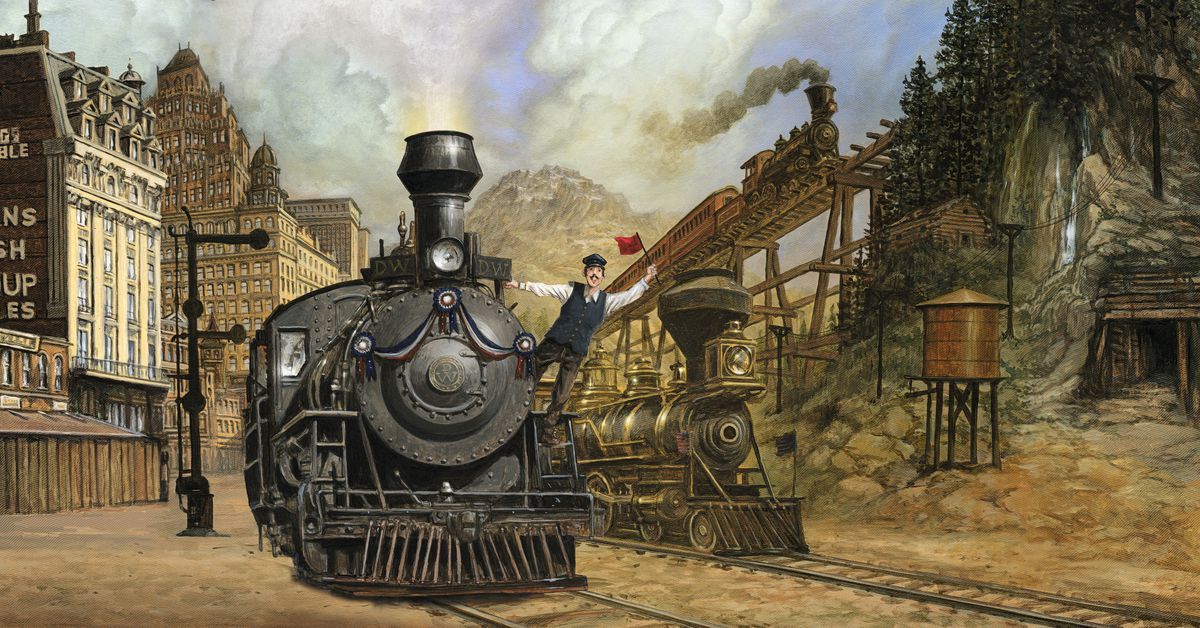Ticket To Ride: Legends of the West will make the classic new again
Pandemic Legacy turned a lot of heads when it came out in 2015, not the least of which was the head of Alan R. Moon. His award-winning game Ticket To Ride, launched in 2004, quickly became one of the hobby’s vanguard titles, widely touted as a gateway into the marvelous (if ever so slightly intimidating) world of modern board gaming. Why not build a legacy version of Ticket To Ride? Pretty soon, his phone started to ring.
“I actually had some other offers from people over the years,” Moon told Polygon in a recent interview. “‘We should do a Ticket To Ride legacy game!’ Well, you know, maybe. But I’m not sure you would be who I would choose. Why wouldn’t I go with the two main guys? [...] That was really the first step for me.”
The “two main guys,” of course, are themselves award-winning game designers — Rob Daviau, the creator of the legacy genre of board games, and Matt Leacock, the creator of Pandemic. Finally, in 2016, Moon got everyone on the same email thread. Together, the trio of Spiel des Jahres winners created Ticket To Ride: Legends of the West.
“Matt and I just spoke once,” Daviau recalled, trying to piece together the making of a game that stretches well before the COVID-19 lockdowns. “I’m like, ‘We’re doing this, right?’ And he’s like, ‘How are we not doing this? There’s no reason to not do this.’ It was an immediate ‘Yes.’”
The reason that Ticket To Ride has earned such a global following — with dozens of variants, expansions, and even collectible editions of the now two-decade-old game — is because of its simplicity. Players draw cards from a shared pool, then use the cards they’ve collected to play suits of matching cards to the table. Once played, those cards are transformed permanently into train lines that crisscross over the map.
But there’s a strategic layer to the game as well. Players score the most points by securing railway lines between certain cities on the map; and blocking other players’ routes is all part of the fun. That competitive aspect adds a delightful layer atop an already easily understood product, and it all but assures that even the younger or less experienced players at the table will be on even footing from start to finish.
As it turns out, adding yet another layer to that gameplay was a bit of a challenge.
“In my arrogance,” Moon said, candidly, “I thought, ‘I can do this by myself.’ I’m so glad I didn’t try that, because I would have been really frustrated.”
A legacy-style game changes every time you play it. In the first game in the genre, Risk Legacy, those changes included novel new powers and abilities that were added to each faction. In Pandemic Legacy, that meant wounds and scars that would be applied to the various characters from game to game, limiting their abilities or making them so fragile they could be permanently knocked out of the game. In working together on the legacy version of Ticket to Ride, Daviau and Leacock racked their brains for a long while, trying to find the right way to express the legacy formula within Moon’s iconic design.
“Some of the great things about Ticket to Ride are, it’s really accessible,” Leacock said. “It’s got great tension. [...] We didn’t want to mess with any of that stuff. It needed to feel, at its core, like you’re playing a Ticket To Ride game plus.”
“We [still] wanted to poke and prod a little bit of the core system,” Daviau added.
“That’s one of the wonderful things about designing a legacy game on an existing title,” Leacock concluded. “Players who’ve already played games in that line can kind of slide in and make themselves comfortable.”
In the end, they settled on the idea that the game would eschew hard historical themes, and instead become an exploration of tall tales and fables.
“In my arrogance I thought, ‘I can do this by myself.’”
“If we’re looking at trains, you’re looking at the 19th century,” Daviau said. “I don’t think Instagram had started in the 19th century, but the world certainly wasn’t immediate [in terms of news delivery]. Things happen over there, which just came through — and things always seemed a little larger than life. By the time you get over there and see what’s there, it may not match what you heard. So it’s fables, and tales, and fireside conversations [on the frontier] in Oklahoma or Texas.”
Since legacy games are known for having huge spoilers, the trio is still reticent about what’s inside the box, but we can still share the most basic details about Legends of the West today. Players will take on the role of 19th-century pioneers, meeting challenges and unlocking new frontiers — and rules — as they go. It’s a competitive game, not a cooperative one like Pandemic. The game will support two to five players in all, and it includes plenty of plastic train cars, as well as event cards and newspaper clippings. Then there’s Moon’s favorite part: An overarching story that ties together all 12 of its 20- to 90-minute episodes.
“I think Rob really came through and wrote a great story for the game,” Moon said. “That really became our focus, [...] and so the changes and the additions [to the game] were within that story.”
Furthermore, diehard fans of the Ticket To Ride franchise — of which there are more than a few, Moon notes — will likewise have plenty of new content to savor.
“We didn’t just take the existing expansions and slice and dice them and put them [in the box],” Daviau said. “It’s new material.”
Expect to hear more on Ticket To Ride: Legends of the West as we get closer to its Nov. 3 release date. The final product will cost $119.99, and be available directly from Asmodee and at your friendly local game store.
Source: Polygon


